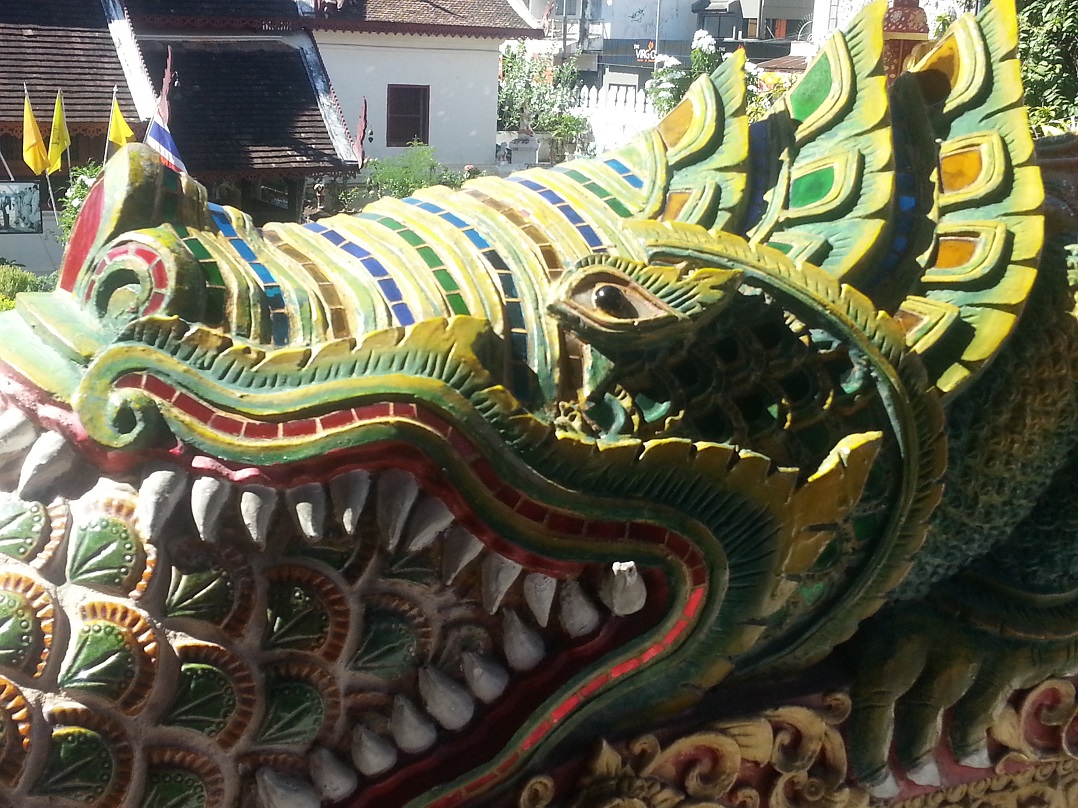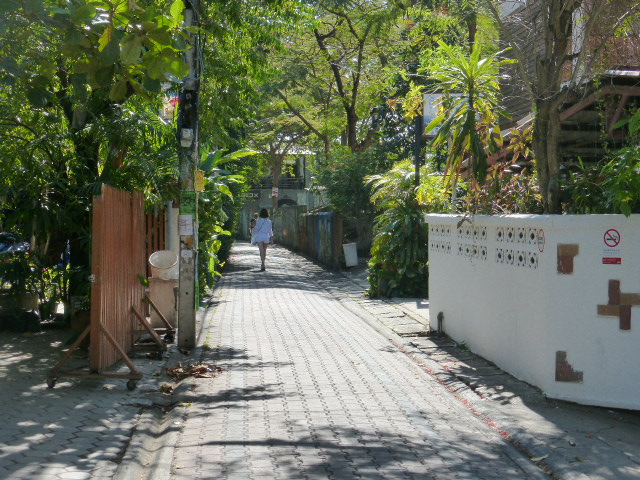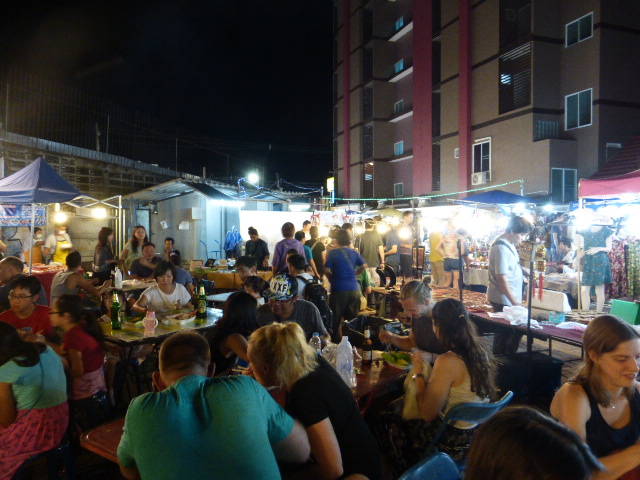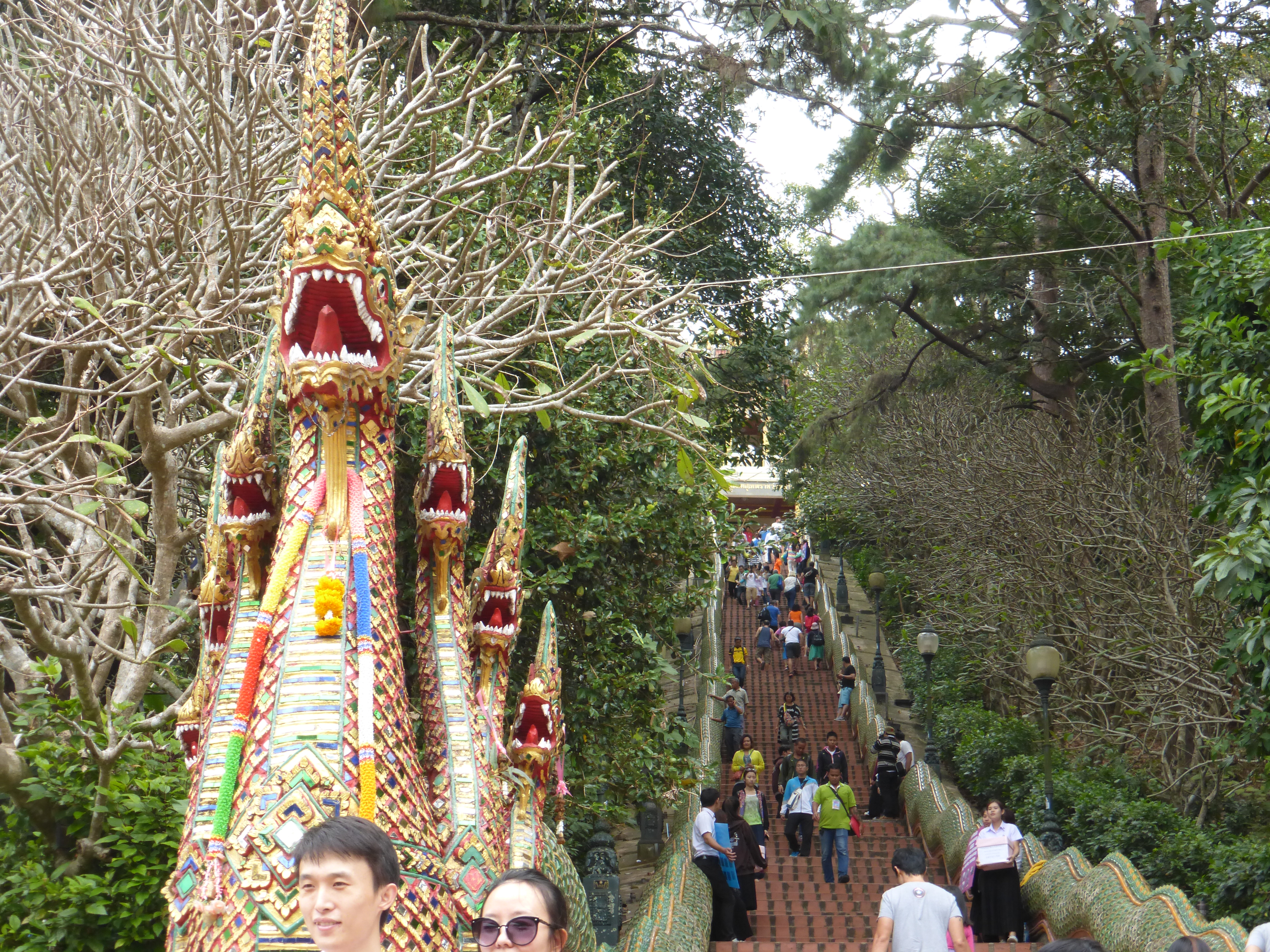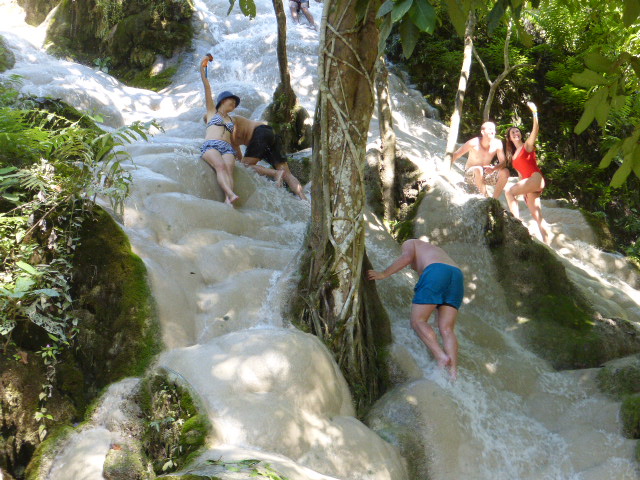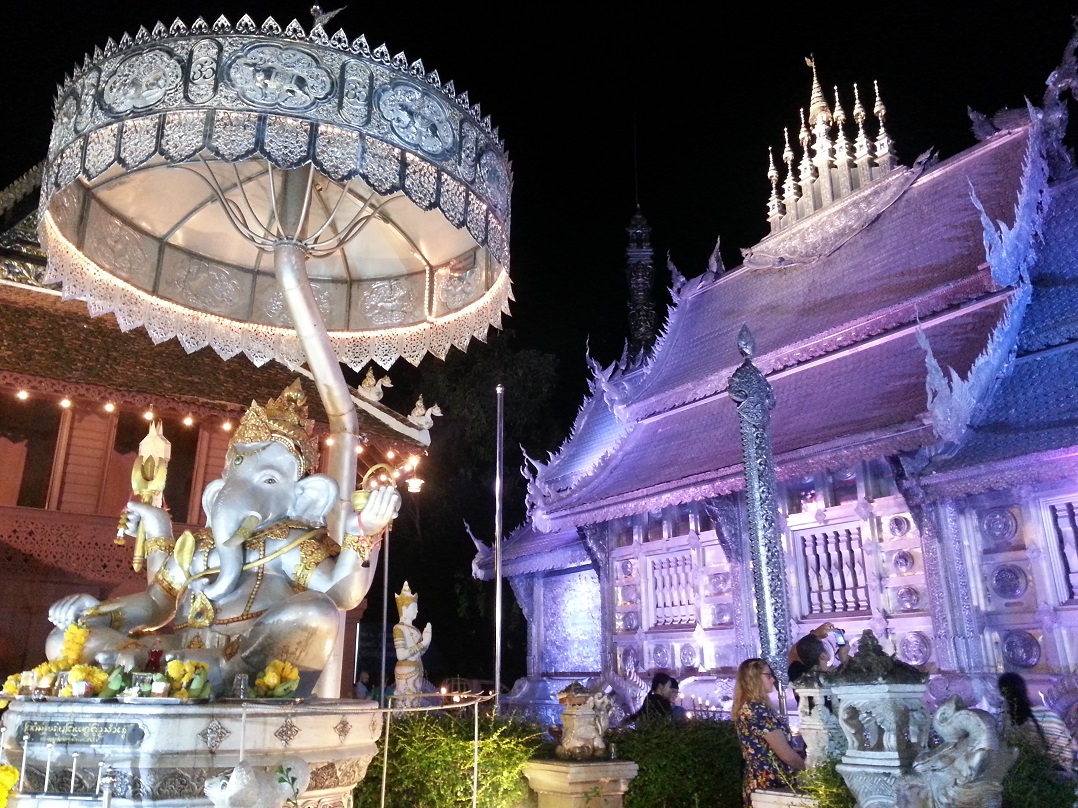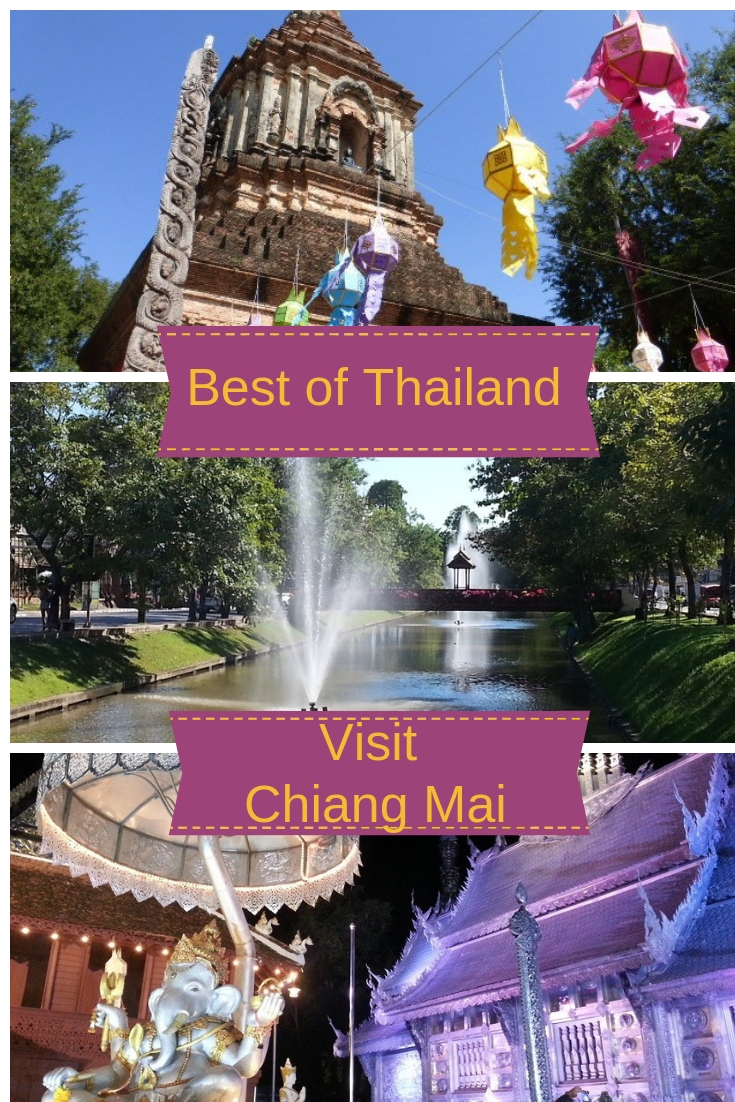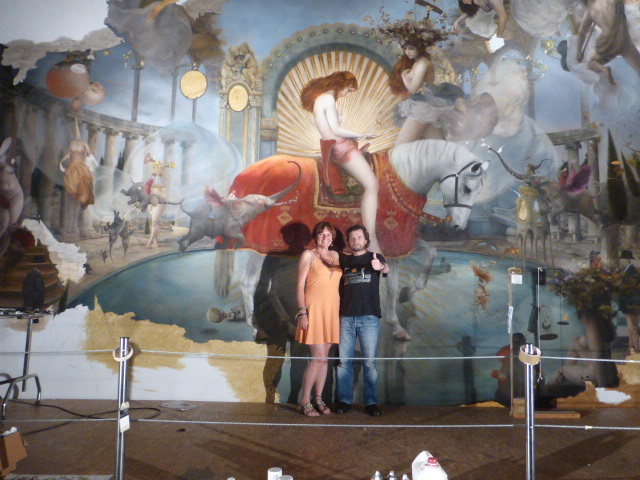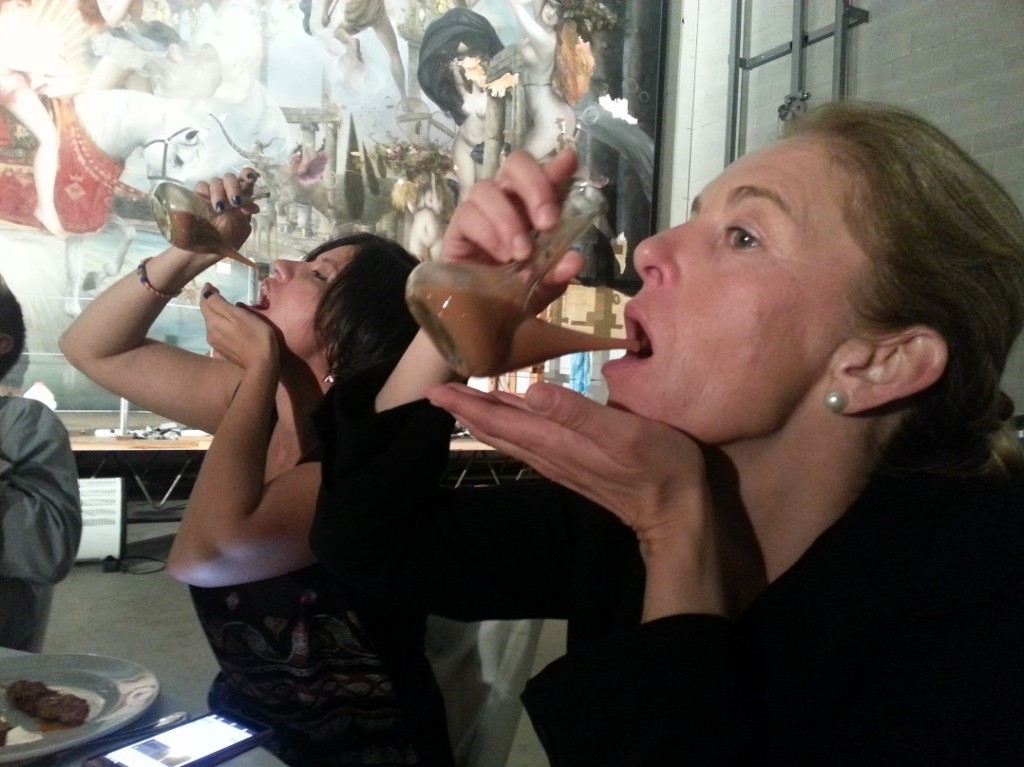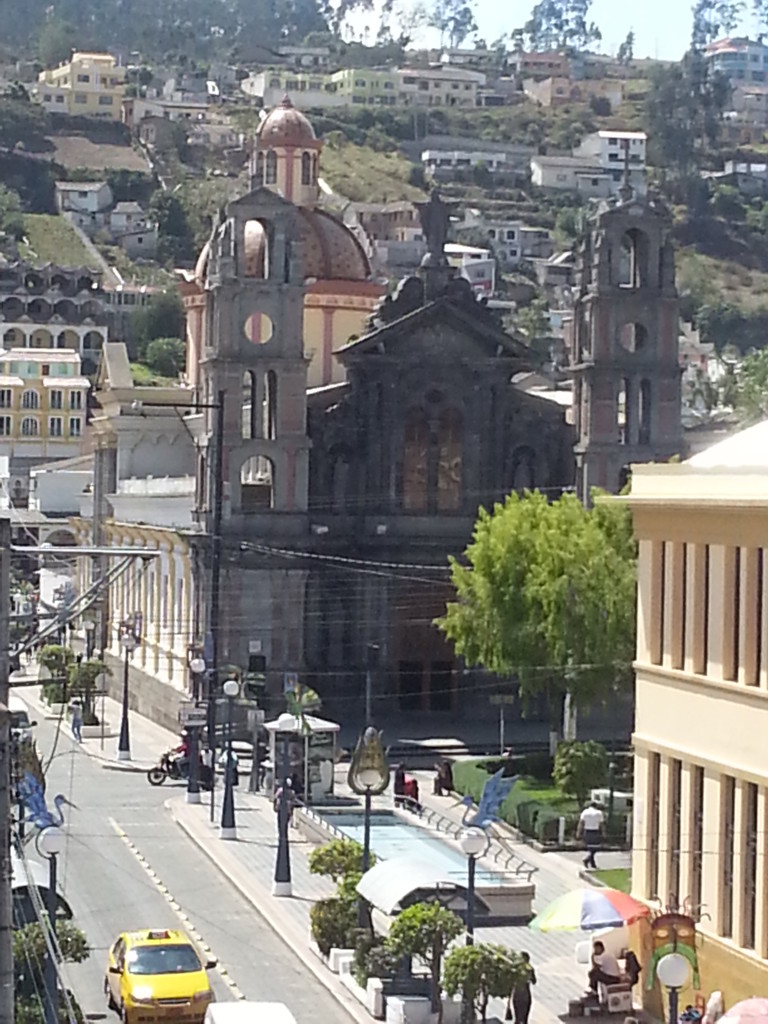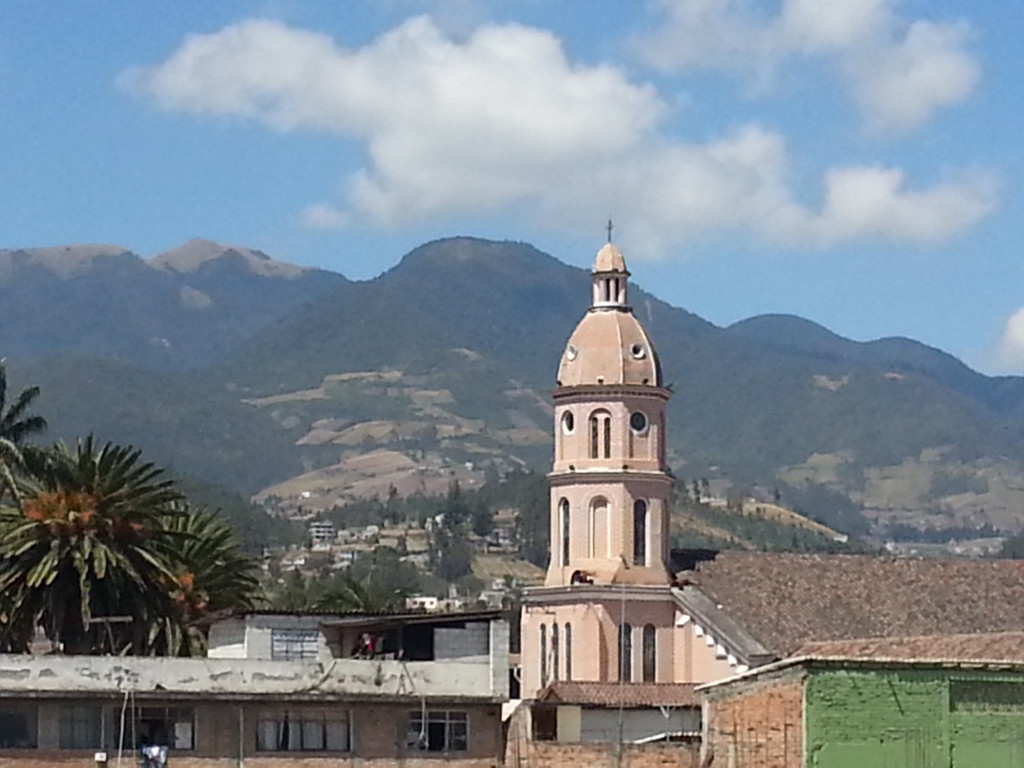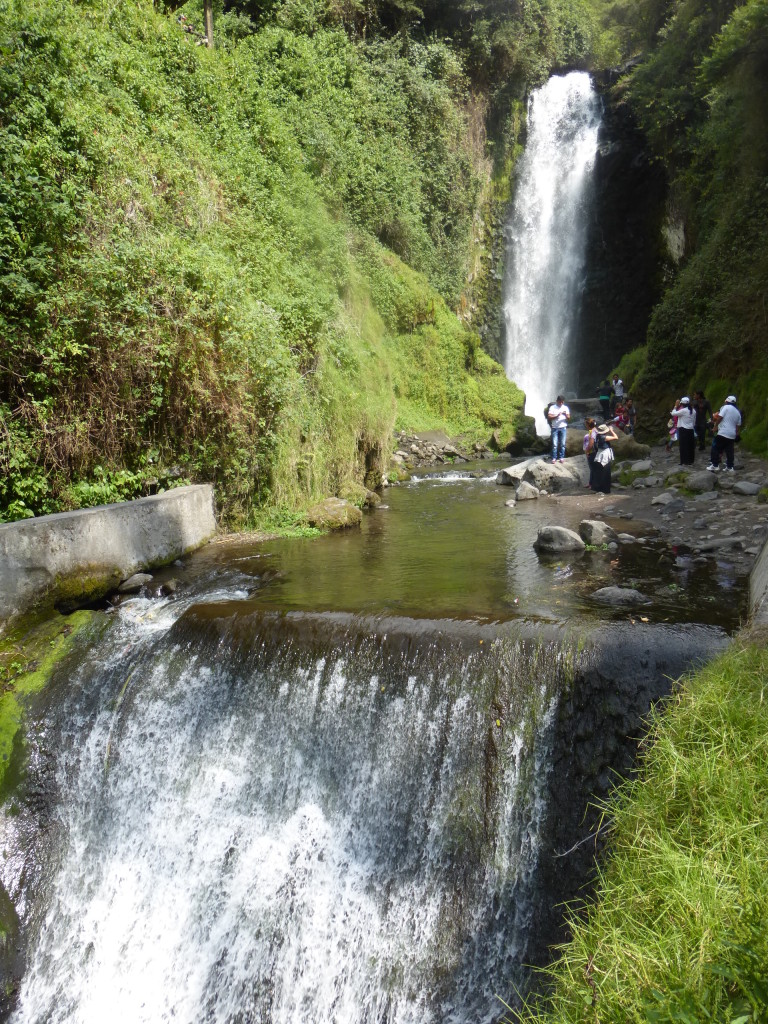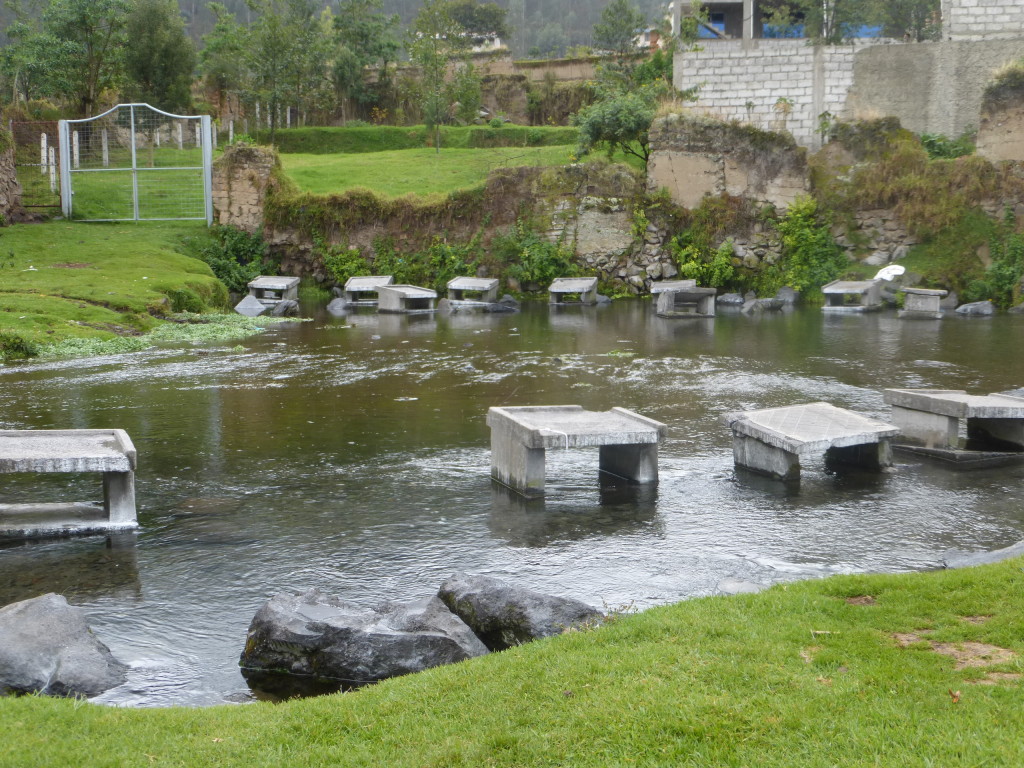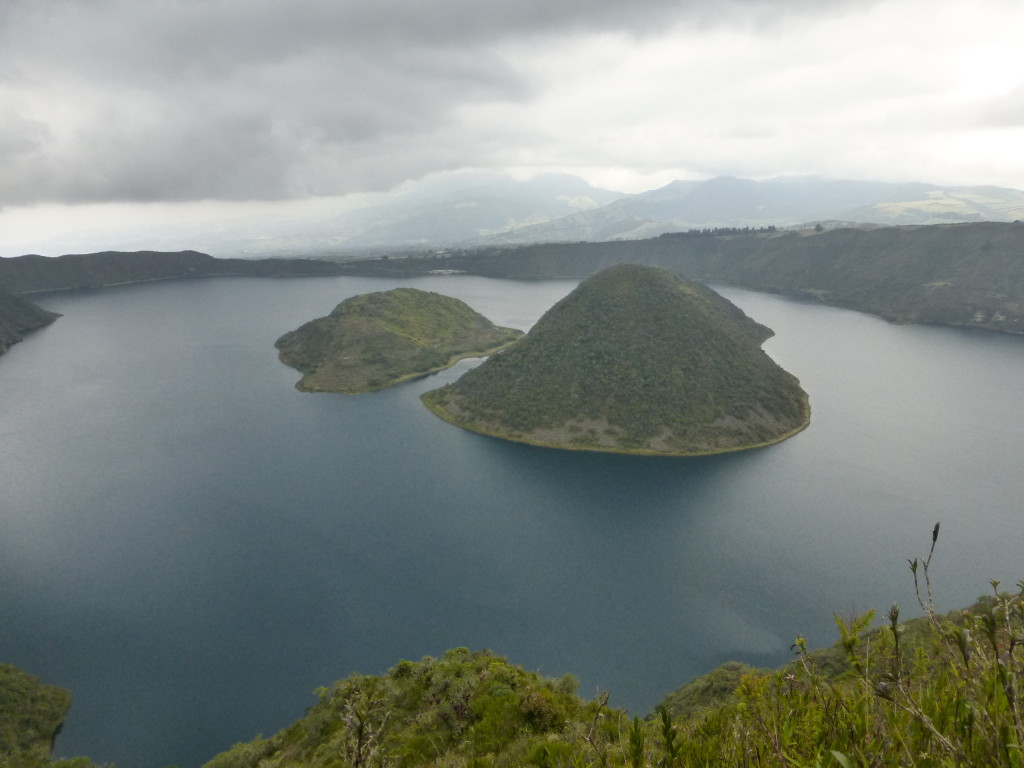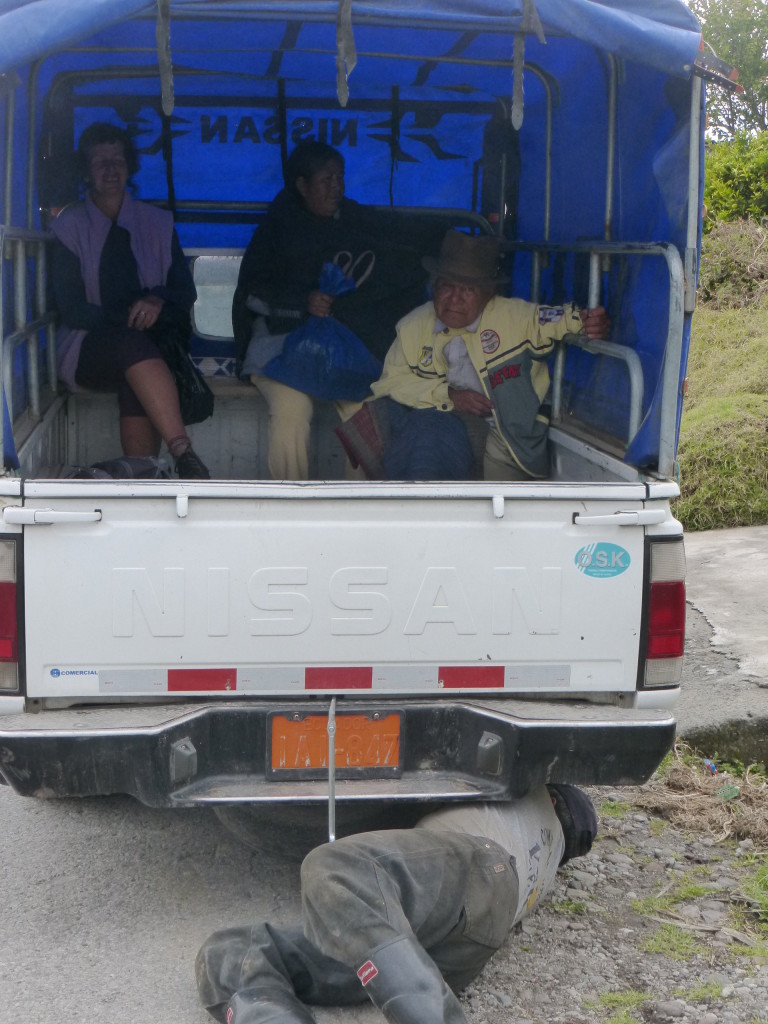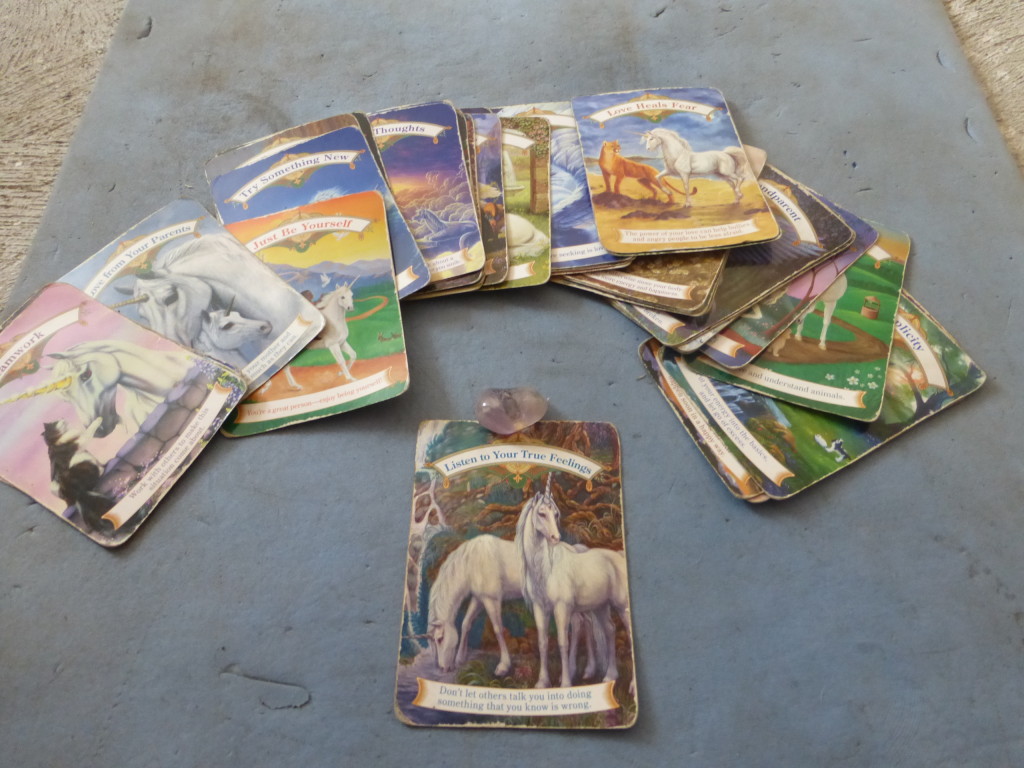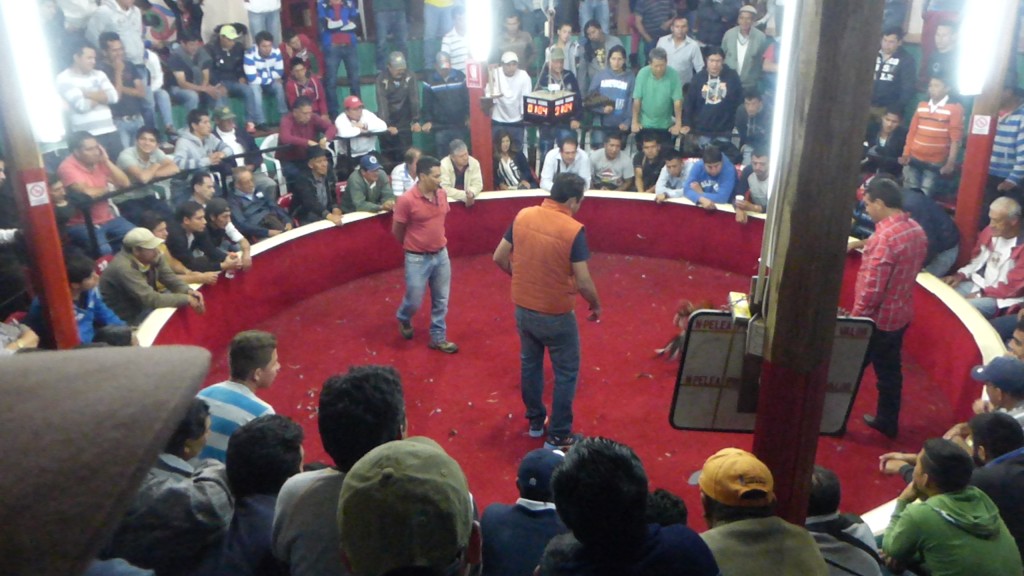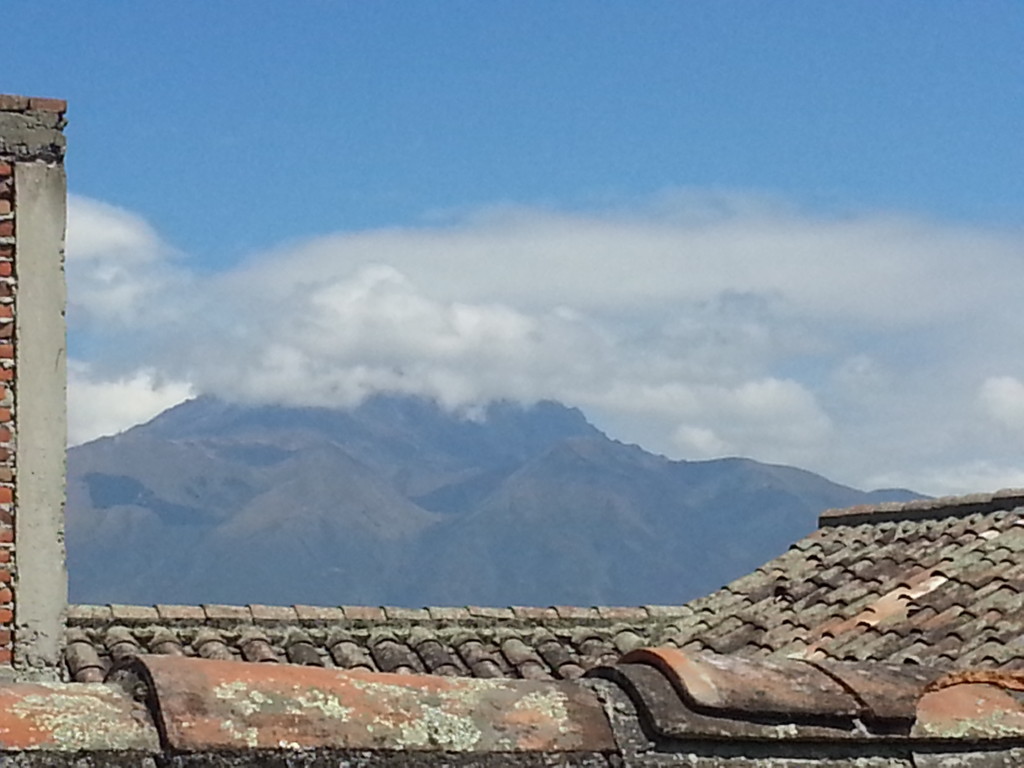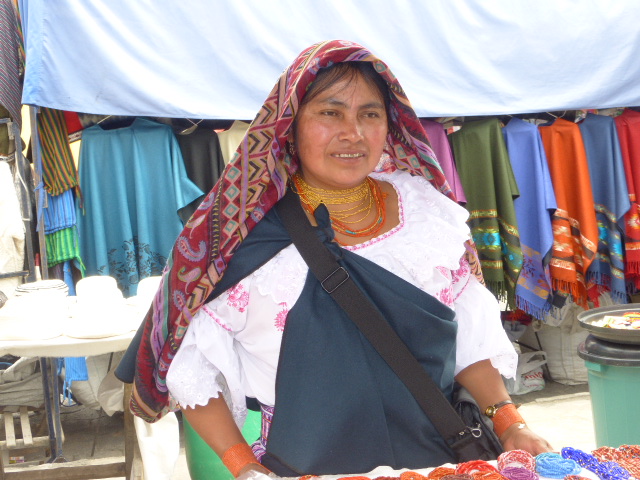
by Jane | Sep 17, 2018 | South America |
This article was first published February 2015 and has been updated.
The ‘Day of the Dead’ and Climbing a Volcano in Quito, Ecuador
Arriving in Quito, Ecuador on ‘The Day of the Dead’ my friend Marcel and I managed to wangle our way into the crypt which is underneath the Basilica.
Normally only open on this one day each year to the relatives of the dead whose remains are interred in little holes in the walls, we tried to look like locals as we sidled past the guards on the door.
Scarlet Jones Travels is a participant in the Amazon Services LLC Associates Program, an affiliate advertising program designed to provide a means for sites to earn advertising fees by advertising and linking to Amazon.com

the crypt underneath the Basilica, Quito, Ecuador
We respectfully spent half an hour or so wandering around the tunnels where families were dusting out the cobwebs in the little alcoves and replacing the plastic flowers, photos and statues of this saint or that virgin and generally just giving everything a bit of a spring-clean.
It was very different to the bright, colourful ceremony that we had passed in our bus earlier that day up in the mountains, although I do like the tradition of everybody remembering their loved ones on the same day.
Rather than individuals dealing with their personal loss on various anniversaries of birth, death or Christmas whilst the rest of life goes on around them, the Day of the Dead allows a collective understanding and empathy with others.
As our bus had driven out of the mountain town of Otavalo earlier that morning we had got caught up in a traffic jam outside the main cemetery where the majority of the indigenous population bury their dead.
The roads around the cemetery had been packed solid with people and families laden down with baskets and flowers as whole families decamped to the graves of their ancestors where they held picnics. The picnics which always included the dead person’s favourite food were actually spread out on top of the graves and everybody sat cross legged around.
The ‘Day of the Dead’ which is celebrated all around Central and South America and Mexico is a day of celebration rather than sadness and it was never going to be any more colourful than in that rural cemetery.
To further cement the collective remembrance, at this time of the year many of the shops and restaurants sell little images of people called guagua de pan (bread babies) and a thick, gloopy purple, slightly unsettlingly warm drink called colada morada (the drink is made of corn and blackberries). Both of these seasonal treats are devoured with relish everywhere.

guagua de pan; treats for the Day of the Dead in Ecuador
Reflecting on the previous five years.
As I update this article nearly five years after I had first published it, I reflect upon how my life has turned out.
Arriving in Quito after 3 months in a volunteer placement in Peru I was a totally confused solo traveller. My personal life was in tatters and my self-belief was at rock bottom. I often pose myself the question….’what will my life look like in 5 years time’…and I vividly remember doing just that when I was in Ecuador.
I never take things for granted and I know that I got to the place in my head where I am right now with a lot of determination, constant questioning and with the support of some truly amazing friends. South America is edgy, dangerous, overwhelming and bursting with life and it was certainly a baptism of fire for me, then recently divorced and with almost zero self-confidence.
I am now a Mindfulness Practitioner and a published (ebook) author, (click here for my book, Becoming Stronger through Mindfulness), I support and guide others along their paths of self-discovery and I continue to travel.
At the end of this article I will post some useful links to resources that you might like if you are about to head off on your own journey – and if you are not quite ready to do that yet and you would like some guidance about how to learn to believe in yourself again, drop me an email. I would love to hear from you.
Things began falling into place for me in South America and one day in Quito when I was out for lunch I met a lady from Canada who was visiting the city. It now always makes me smile when this happens because one of my main worries before I set off on my adventures, and that of most solo travellers is of how you will meet people when you’re on your own; but back then, I didn’t realise how frequently this would happen.
I was extremely grateful when this lovely lady simply came over and asked to join me at my table. The following day Sudha and I agreed to meet so that we could ride the cable car together – and there I was, no longer a frightened solo traveller
In the end we didn’t take the cable car as there was incredibly low cloud over the entire city but we went off for a morning’s shopping in a large craft market and drank some more of the purple colada morada. Quito stretches the length of a long narrow valley and in just about every direction there are mountain peaks, volcanoes and clouds.
There is something so special about the clouds above the Andes. I don’t know how the sky can appear to be bigger and more expansive but here it does, and because in the mountains you are high up, the clouds sit lower over you.
They can certainly affect the mood of the city trapping the air in when they press down grey and menacing, or stealthily creeping and flowing down the surrounding mountains like soft grey rivers of fog or, when there are no clouds at all, it’s as if your spirit is free to soar and fly up and away into the universe beyond and here I was enjoying it with a lady that I had only recently met and looking forward to my next destination.

Quito far below the Pichincha volcano in Quito
Climbing the Pichincha volcano, Quito
However, I’m getting all poetical and I digress yet I still have to tell you about my last amazing day in Ecuador. Marcel and I decided to climb a volcano. We were joined by Rachael who was new in town and staying in the same hostel as us and luckily for us the clouds were way up high on the day that we set off for the cable car called the TeleferiCo.
Quito, the capital city of Ecuador sits at an altitude of 2800 metres and is the highest official capital city in the world. It has more than 1.6 million inhabitants…and it literally sits around and up the sides of an active volcano which last had a significant eruption as recently as 1998.
These South Americans are a hardy lot and they don’t let a little thing like an active volcano bother them – they have even built a cable car system up the side of this one!
Unlike many other cable cars in Latin America such as those in Medellin or Manizales, this cable car in Quito has been built mainly for tourists and it whizzed us fast up the side of the volcano. Or at least it was fast once we’d got onto the thing. Rachael and I had to restrain Marcel who with his German scientific mind could not believe the method by which we had to get onto the system.
In fact there seemed to be no method. Despite the steadily growing queue, if you wanted a whole cabin to yourself then you could have a whole cabin to yourself and damn everybody else behind you! In the end, Marcel cracked and escaping the clutches of Rachael and me he jumped the queue and strode into a cabin with a family who had hoped to have it to themselves.

the summit of the Pichincha volcano is the furthest peak
Once onboard the Teleferico it whisked us up to 4,000 metres and some absolutely stunning views of the city. The ride costs twice as much for tourists as locals and is quite expensive by South American standards and in my opinion you shouldn’t bother going unless you have a clear day. But we were lucky and we had a stunning wide-open sky kind of day and we were not here only for the ride. We were here to climb a volcano.
It started out just like a walk in the park. But an altitude affected heart thumping, heavy-limb uphill sort of a walk in the park.
A grassy ridge led us up and up for more than an hour and very gradually the sharp craggy rocks of the summit came into focus.
People use this volcano as a training ground for altitude and groups of runners – runners!!! – I could barely put one foot in front of the other at this altitude – groups of runners puffed past us. In the cafe there was an oxygen bar where, for a few dollars you could buy time at an oxygen point and sit with a mask on and revive yourself.

the scree slope – great fun coming down the Pichincha volcano
I am never entirely happy with heights and a couple of hours we were faced with the steep side of the sharp peak. Here I have to thank my two friends who encouraged me up – at times using hands and feet and climbing up the rocks.
It was tough going but we passed people on their way down who told us that the effort was worth it. The clouds began to swirl down around us and I was a little afraid of getting lost because in some places there was no obvious path, but onwards and upwards we went.
And finally, after much scrabbling, we were there on top of the world. The clouds lifted and swirled and allowed us to see Quito, just a large splodge of dusty colour below and we sat and caught our collective breaths.
It was amazing to think that we were stood on the summit of an active volcano, 4000 metres up in the sky – but we also knew that getting down was not going to be a piece of cake either.

we made it – the summit of the Pichincha volcano in Quito
But there was a quick option to get down part of the way. Once past the spiky rocks which were very slowly negotiated, we bypassed the zigzag path and launched ourselves off down the scree slope. This was an almost sheer, almost smooth slope at a steeper angle than 45 degrees and was made up of soft sand and gravel with the odd clump of grass or rock to add an element of danger.
At the top you take a deep breath and you launch yourself using whatever method best works for you. Crouch down on your heels and scoot down the hill using your feet as a sled, or bounce down; leaning well back into the mountainside taking giant-sized slithery steps and all the time being very careful not to catch your boot on a misplaced hillock which would cause you to face-plant the gravel.
We all obviously made it down in one piece and we caught the cable car back down through the thick fog which had now swallowed up the entire city.

heading back down the volcano in Ecuador
And then I was climbing into my bunk in the Minka Hostel for one last time before I would take a cab to the airport and my flights down to Brazil.
If you are thinking that your life is somehow stuck but you can’t quite put your finger on it, or you have demons that you need to fight before you can move forward, you can get my book here – Becoming Stronger through Mindfulness or trial my self confidence builder, the Smash the Pumpkin Project for a month, click here.
If you are ready to travel yourself; when I was in Quito I stayed at the Minka Hostel – get the latest prices and details here. I bounced in and out of this hostel for a couple of months because it had such a friendly and welcoming atmosphere. I love the Lonely Planet Guide books – you can get many of them online now too so that you don’t have to carry them around in your backpack – and talking of backpacks I STILL love my [easyazon_link identifier=”B06VVR23DX” locale=”UK” tag=”scajonblo0e-21″]Osprey Farpoint 55 backpack[/easyazon_link] which has been all around the world with me
If you enjoy reading about my adventures, do follow me either here or on Facebook. Click on this link and I will also send you a virtual postcard with the odd newsletter attached every month or so.
And do take 10 minutes to drop me an email or let me know in the comments what you are up to and what you thought of this article.

the hike up the Pichincha volcano started off fairly easily
This post may contain affiliate links and/or references to our advertisers. We may receive compensation when you click on or make a purchase using such links

by Jane | Jun 2, 2015 | Europe |
An engineer turned artist;
an artist turned chef
We were driven to an industrial park on the outskirts of Banyoles for dinner. The itinerary told us that we would be attending a ‘pairing dinner’ with the strambotic painter Quim Hereu. In the golden evening sun we were warmly welcomed by Quim and his wife Tania and taken inside the industrial unit where a surreal world had been created. Follow this link to Quim’s website: hereu.net
The Stram Project

Jaume introduces Quim and his work
The large space was totally dominated by Quim’s latest work in progress – which is the second of a trilogy of works. The entire back wall was a work-in-progress – a MASSIVE painting with vibrant colours and wherever you looked you could spot something surreal or something simply beautiful. The first painting was already boxed up in readiness for its journey to Mexico where a buyer hopefully waits, the huge wooden crate stapled shut, although Quim would dearly love to see the painting exhibited in Girona.
Glassware and cutlery gleamed on a circular table in the centre of the room and the Argentinian chef Gonzalo Martinez who is based in Barcelona had set up a kitchen in one corner of the room and was studiously piping tiny little balls of foie gras onto plates. An old iron bed which had once belonged to Quim’s grandfather and a glasshouse glowing with light from a red chandelier were the only other decorations. Casually propped against one wall was the original drawing from which Quim was replicating his painting.

the table set for dinner
Quim was passionate about his subject and spoke vivaciously in Catalan whilst Juame Marin the Director of Marketing at the tourist board: Costa Brava Girona was translating just as fast. Forgive me if I am a little inaccurate but there was so much information to absorb. Strambotism is an artistic movement that was created and originated in Catalunya around 1974. At first glance it has similarities to surrealism but it is a totally separate entity. As I have already said, you could gaze forever at Quim’s work and always see something new.
After the introductions we all took our seats, joined by Jordi Xargay i Congost, the President of the Consell Comarcal del Pla de l’Estany and Ferran Vila Pugol who is one of the top sommeliers in the region. Gonzalo the chef had designed and produced each course to represent, compliment and explain a different aspect from some of Quim’s works, while Ferran the sommelier had paired a drink to compliment the food (and therefore also the paintings), even brewing or making some of them himself.

the centre piece of the painting
The first of the trilogy represents time, the birth of Venus and the craving to get eternal youth. I hope that Quim will forgive me if I don’t explain this correctly but the snail is key to the factory of time and also appears in the second painting which is about power. Not the power of swords, or strength or males, but it is more subtle. The centre figure of a lady on a horse is the first queen of Catalunya who had power over her subjects and even the Pope of the time. She holds a snail in her hand – and here is another link where the snail mirrors and represents time. Watch a snail and it moves frustratingly slowly. Move away for a short while and when you return it has gone. In the same way as time slips suddenly away from us and you are at the end of your life. Blink and you miss it. The third painting will represent freedom; because without freedom one can’t enjoy the other two concepts of time and power. The works represent six years of Quim’s life, with the majority of his time taken at the design stage with a blank canvas. These works are massive – 6metres by 12 metres, and the problem has been finding a buyer or a space large enough to exhibit them. As I mentioned before, Quim would dearly love Girona to display them, and preferably displayed together. He is so passionate about this that he is actually prepared to donate them for free, despite the amount of time that he has dedicated to painting them.
The food and drink

the chef Gonzalo at work
This pairing dinner formed a part of the ‘Live the History’ trip which Jaume and his team had arranged following the TBEX conference. Three other travel bloggers and myself had the most interesting of evenings. The four of us dined along with Jaume, Vikki who was our tour guide, and the other guests while Gonzalo kept extremely busy in his kitchen. You can see his website here: (www.gonzamartinez.com). We were in the company of true creatives and artists, passionate about their respective mediums and their region. Our first drink was a beer, brewed by Ferran with 3 different types of hops – and – this is the cool thing – the texture in the mouth was more important than the smell or the taste as it complimented the textures of the food and the art. By eating replicates of the snails and the clock we were consuming the representation of the snails/time and internalising it.
The flavours were sublime: Catalan style spinach, pinenuts, raisins Iberian ham, fois gras and a tiny cypress tree, together with a label – continued the theme of internalising the art and strambotism. Our second drink was a sparkling wine – again made by Ferran who had produced only 300 bottles and which balanced the saltiness of the chequerboard of the carpa of tuna and anchovies and raspberry caviar.

soup with a twist – in porons
Perhaps the pairing was most visual with the third dish. It was matched to a desert scene but one where the turbaned camel riders had porons instead of heads (a poron is a typical Spanish way of serving wine) – and now we had to drink the most exquisite soup from glass porons. The desert theme was continued with home made harissa and fish on skewers and paired with a very special white wine from the region. We kept the same shape wine glasses throughout our meal and Ferran explained that in his sommelier world the shape of the glass has no meaning at all. The drink is appreciated through smell and taste not by the shape of the glass. He also told us that this region of Catalunya is one of the chief producers of cork, and while the artificial bottle stops are fine for a young wine, an older wine should only be stoppered with cork. Our fourth course was a sweet sausage accompanied by a foamy mashed potato. But even the sausages were not simple. They each had a centre of the local herbal drink ratafia and had an outer casing first of a seaweed and then the finest, thinnest spring-roll pastry. The strong flavours of the sausage were balanced with a robust red wine from the south of Catalunya.
This fourth course was paired with the massive painting under which we were all seated and by now I was certainly appreciating the imagery and the connections. The strength of the horse, the meatiness of the sausage and the flavours of the red wine all connected and flowed through each other. The fifth course was about cats and the apple temple, and like the painting and the sparkling Muscat wine it had an altogether lighter feel to it.

work in progress
Quim talked about his influencers and how with the Catalan spirit and strambotism his creativity and techniques can fly. What makes Quim so amazing is that he initially studied as an engineer but he followed his passion and moved across into the art world.
A Michelin star lunch
The following day we took lunch at a Michelin star restaurant in Banyoles where the chef had moved from the art world into that of food and cooking.
Both Quim the artist and Pere the chef are true masters in their second choice of career and are at the top of the tree – which also proves that it is never too late to follow our dreams and our hearts and we should pursue that which makes us truly happy.
Ca l’Arpa is a Michelin star restaurant in Banyoles where we were privileged to a tasting lunch. The chef Pere Arpa is from the town and his restaurant and small boutique style hotel is in what was once his grandfather’s house. Decorated in muted greys and whites with just a few splashes of colour, one of the nice touches in the dining room were the huge plate glass windows which offered a view to the shiny stainless steel kitchens and the chefs working behind the scenes.

the window into the kitchen
Our wine was carefully chosen to compliment the meal and as was to be expected, everything was sourced and produced locally and from Catalunya. The first wine interestingly was aged in ceramic barrels as opposed to the traditional wood and from the Finca Olvidardots and made by a woman which is apparently also quite unusual in what is a predominately male dominated occupation here. The wine accompanied our starter of a ravioli of apples and black sausage (blood sausage and rice) – and then the food kept coming.
We had numerous, exquisite tastes and bursts of flavours, all presented on little platters or saucers and served to us either by Pere himself or his wife Montserrat, along with a detailed explanation of what we were eating or drinking and how the flavours had been designed and combined. One of the wines was a biodynamic wine and came in a plain bottle with no label – just a simple collar around the cork. This was produced by a Swiss owner at the cellar Bell Lloc near Palamos. Then followed an animated discussion around language and exactly what cut of meat we were eating when Pere presented it to our table before carving it. He said that it was veal – and the ultimate general consensus was the shank, but whatever, it just melted in the mouth and it was divine. Pere had not forgotten that one of our group was a vegetarian and he had devised separate dishes for her with just as much care and thought as those for the rest of us.

Pere Arpa explains his dish
Our menu included delights such as a fresh cheese and plums, a sweet and sour terrine of pig’s head with onions, marinaded sardines on a little bed of chickpea puree with sunflower seeds scattered over the top and green, white and purple asparagus. There was a sweet sausage of liver and curry butter (very subtle and delicate), a dessert of passion fruit and marscapone and a whole range of breads during the meal and a selection of little bonbons at the end.
After our lunch Pere showed us around the hotel upstairs and some of the bedrooms which have all been tastefully decorated and which overlook a serene little courtyard and garden at the back of the building. Pere changed the direction of his career at the age of 25 and for 20 years he has dedicated himself to cooking. He moved into his grandfather’s old home 8 years ago and extended and altered the house so that he could accommodate guests whilst cooking. The overall ambience is one of calmness and tranquility. There is a link to his previous life as an artist (with paint as he is still creating masterpieces albeit with food) as one of his paintings is displayed behind the reception desk.

Ca l’Arpa
The magic and passion of Catalunya
The unique experience of the pairing dinner hosted by Quim Hereu was a very different experience to our lunch at Cal l’Arpa, but the Catalan region was weaving its magic and encircling and entwining us, drawing us tighter with strands of an opaque smoky substance. Hard to see and not entirely tangible but there and ever present, the region has a culture and an identity, a passion and a pride which is expressed through its people and its food and its drink.
Engineer becomes artist, artist becomes chef. two men. Both creative, talented and passionate. Both proudly Catalan.
Quim produces his works in an industrial space; his initial career as an engineer stemmed from industry and Pere now lives and works in the space of his grandfather. Thanks to everybody involved from the tourist agencies of Pla de l’Estany, Pirineu de Girona, the Costa Brava and Catalunya who made these such amazing experiences. As usual, all opinions are my own and were not influenced in any way.

by Jane | Feb 3, 2015 | Ecuador |
I survived my pickpocketing at the border but one hundred dollars lighter and I jumped on a bus to Otovalo. I had been here before but I wanted to break my journey and this town warranted a better look around.

Otavalo
In the end I stayed here for ten days in two different hostels so I really got a feel for the place and its residents, bouncing in and out of Quito in between. Since my first visit to Otovalo there had been an earthquake and the road through the mountain is currently closed. It now takes twice as long to get to the town from Quito on a very long winding route which has had a severe impact on the number of tourists who pop up from the capital for the day.

Otavalo, Ecuador
Bt it is worth making the effort and it is worth staying longer. Otavalo has got, of course the crafty, artisan market – the biggest and arguably the best in Ecuador and it also has a weekly animal market. There are TWO volcanos looming over the town and some beautiful towns and villages within striking distance. It has lakes, mountains and a scenic railway line passes quite close by.
I spent some quality downtime here writing and walking in the countryside and I also I met a British lady who had repatriated herself to the town and we went out together on a couple of day trips.

the mountains of Otavalo, Ecuador
We visited the nearby waterfalls at the Cascada de Peguche which are considered a sacred site by the local indigenous people and who hold ceremonies under and near them.

Cascada de Pegucha
We visited the large lagoon, the Lago San Pablo on a very still, foggy day, a day when dampness hung in the air and deadened all sounds and sucked the life and colour out of the landscape. We saw the little pond formed where the stream tumbled down from the mountains and where the ancient stone washing stones stood. The indigenous ladies still gather here in this pool to wash their clothes, pummelling them on the rocks, and chattering and passing the time of day while they sit or stand in the water.

washing machines
Another day we trekked for five and a half hours the fourteen kilometres around the rim of the Laguna de Cuicocha with its two forested humps of islands hunched in the middle and is so named for the guinea pigs that the islands are supposed to resemble. That trek was actually quite tough as in some places where the path climbed very high above the crater, and the gradient rising from 3100 to 3400 metres but it was very beautiful. The path wound in and out of trees and each time it took us back out above the lake our viewpoint had shifted and we had a different perspective. The lake changed from a moody, glassy black which reflected the mountains to molten mercurial silver and all shades of blue/green in between.

Laguna de Cuicocha
We had rain, sun and hail thrown at us while we walked and then when we finally reached the road we had to hitchhike back to the town as there was no public transport. That in itself was an adventure as we climbed into the back of a truck who had already picked up a lady and a drunk guy who kept retching in the corner – and thenthe truck got a puncture too.

waiting patiently for the puncture to be repaired
Julie the British lady that I had met was a masseuse and did something with crystals. I had a lovely massage and she read my cards (something like tarots) with uncanny accuracy but the jury is still out on the crystal stuff. I supposedly had all my bad energy taken away from me, but following subsequent events she would probably dispute that!

The cards. Uncannily accurate
On one of my return trips to Otavalo (by now my third visit) I was accompanied by the uber intelligent Marcel from Germany who I had met in Quito. My trip has been educational in more ways than one but before I set out I never expected that I would learn about black holes, quantum physics and tons of other sciency stuff. And all credit to Marcel that despite my blank looks he didn’t tell me that I was completely stupid and he did explain a lot of stuff in a way that even my non-scientific mind could grasp (I gave up on physics in school on the day that we made patterns with a magnet and iron filings. What use was that ever going to be in my life?)
One evening we heard that there was a cockfight going on. This is legal in Ecuador and most towns have an arena. We debated the ethics of going and then decided that, provided we didn’t have to pay an entrance fee, we might at least pop our heads in and see what was going on.

A cock fight – with birds strategically placed behind a post
It wasn’t as bad as I had thought – I actually found it more interesting watching the crowd watching the fighting than the birds themselves. It was similar to a boxing match in as much as there were timed segments, the referree would frequently pause the match and there was some big money changing hands among the crowd.
We stayed for just twenty minutes which was quite enough, and I would not go again but just after we had left we were told that there had been an immediate kill which had earned the owner of the bird a huge two thousand dollars.

waiting for the cock fight
I have to ‘fess up to not being particularily politically correct in several respects because I also visited the animal market twice as well as the cock fight. And they were both very un-pc. But interesting. And quite legal and normal in Colombia. In the market there were all sorts of animals changing hands, from tiny little chicks and puppies to pigs, goats and bulls. Some very grand cockerels were on display which we later learnt were being sold for cock fighting and a man was very strangely leading a randy bull around on a rope.

patiently waiting for a sale
Daniel from Cuenca had joined us in Otavalo by now and the three of us spent a hilarious half hour watching the bull unsucessfully attempt to mount the other bulls that were tied up to the fence but he only succeeded in spraying everything and anybody who was stood too close with sperm. Very prurile and childish but ever so funny. Daniel actualy recorded the whole thing if you are interested!

calendar shot – October
Daniel had joined us in Cuenca for a music festival which I had been reliably informed by Julie the Brit would take place at the sacred waterfall and which would be a moving,s spiritual affair. Was it heck!
It was not at the waterfall at all, but in a large, drafty sports hall. A bevvy of bands took their turn on stage but none of the music was spiritual – it was all a jazzed up version of the music that you can hear on many high streets. Pan pipes accompanied by drums and guitars didn’t really do it for us since we were expecting such big things. I have to say that it was a dreadful night – not least because a man who was sat next to me shoved his tongue in my ear and told me that he loved me (I moved pretty sharpish). Marcel thought that the whole visit to Otavalo was hilariously funny and Daniel couldn’t wait to leave Ecuador (I should point at that neither were the owner of the out of control tongue)

volcano hidden in the clouds
One nice thing about Otavalo was that I also had the chance to meet up with Ashley from the States who I had previously met in Banos. I was told before I started to travel that there was a well worn path that travellers followed but I never believed that I would re-meet the same people again. After all, the distances are so huge, but people swap Facebook addresses and hook up again. If somebody can recommend a hostel or a good place to visit that can sometimes be safer than winging it (not always as some of the best things that I have seen or done have been when I have got lost)
Since my return to the UK after my trip I have even met up with fellow travellers here too and that is fantastic because you have the connection and the shared memories.

a lady in Otavalo market
Leaving Otavalo behind on November 2nd Marcel and I in our bus drove past the cemetary where the indigenous population bury their dead. It was packed. The roads around it were solid with people and families laden down with baskets and flowers because it was ‘The Day of the Dead’ which is celebrated all around Central and South America and Mexico. It is a day of celebration rather than sadness when whole (usually indigenous) families decamp to the graves of their ancestors and hold a picnic alonsgside their resting place, complete with their deceased relatives favourite foods.
Arriving back in Quito we also witnessed the way that some of the city folk commemorated the Day of the Dead. Enter your email address and follow me to ensure that you don’t miss my my next installment or like me on Facebook or follow me on Twitter

